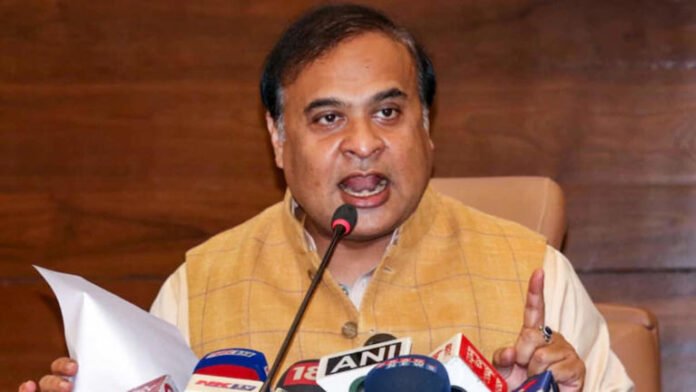Assam Chief Minister Himanta Biswa Sarma took a bold step on June 13, 2025, by issuing a Dhubri shoot-at-sight order. He acted swiftly after receiving intelligence reports suggesting plans to attack Hindu temples in the sensitive border district.
This strong directive comes as part of Assam’s larger strategy to maintain peace and order amid a surge in communal tensions. Authorities fear that unchecked violence in Dhubri could ripple through neighboring districts.
Why the Dhubri Shoot-at-Sight Order Became Necessary
Security agencies uncovered a potential plot by radical elements aiming to incite communal unrest. These groups reportedly planned coordinated attacks on religious sites, especially ahead of the upcoming festival season.
“We will not allow extremists to tear apart Assam’s social fabric,” declared CM Sarma during a press conference.
Unlike earlier times, this time the government chose to act preemptively. Police forces are now patrolling sensitive areas round the clock. Security has been intensified, and drones equipped with night-vision cameras are monitoring the region.
Dhubri’s Border Status Heightens the Risk
Dhubri’s location along the India-Bangladesh border adds another layer of complexity. Over the years, this region has seen illegal migration, identity-based politics, and sporadic communal flare-ups. All of these factors make Dhubri extremely volatile.
The state government, aware of the delicate demographic balance, has deployed extra Border Security Force (BSF) units. They have also enforced Section 144 CrPC, banning large public gatherings and protests.
Political and Public Reactions to the Shoot-at-Sight Order
The Dhubri shoot-at-sight order has sparked a heated debate across Assam. Some see it as a much-needed move to prevent bloodshed, while others argue it might worsen tensions.
- Supporters say the government is prioritizing safety and preempting potential riots.
- Critics from the opposition parties believe the order is excessive and could lead to misuse of force.
- Civil rights organizations, including the People’s Union for Civil Liberties (PUCL), demand close monitoring of police actions to prevent abuse.
Amid all this, the residents of Dhubri remain deeply anxious. Schools and shops have closed temporarily, and many locals say they fear both mobs and security personnel.
How the Dhubri Shoot-at-Sight Order Impacts Daily Life
The order has dramatically altered life in Dhubri. Checkpoints have increased, and movement is tightly controlled. People are limiting their travel and staying indoors whenever possible.
“We understand the need for safety, but we also hope things return to normal soon,” said Rehana Ali, a local teacher.
Nearby districts such as Goalpara, Bongaigaon, and Barpeta are on high alert, with additional forces deployed. Officials worry that unrest in Dhubri could inspire similar incidents elsewhere.
Assam’s Broader Security Policy: Consistent or Aggressive?
This move aligns with CM Sarma’s aggressive law-and-order stance seen in recent months. The state recently extended AFSPA in parts of Manipur and Nagaland and has intensified anti-insurgency operations in other parts of Northeast India.
The Dhubri shoot-at-sight order may serve as a template for future preventive action in high-risk areas.
Read more on Assam’s evolving security measures in AFSPA Extension Report.
The Dhubri shoot-at-sight order marks a crucial moment in Assam’s fight to maintain peace. While it raises valid concerns about civil liberties, the immediate priority remains public safety.
READ MORE: Srimanta Sankardeva Award: Sonal Mansingh Honoured




